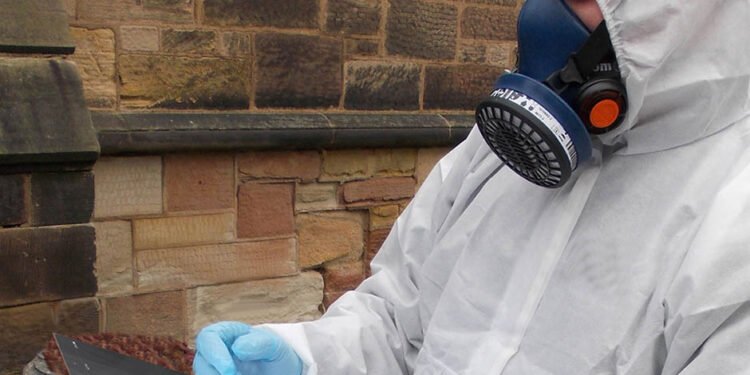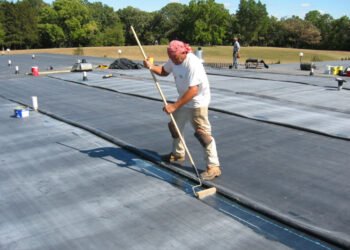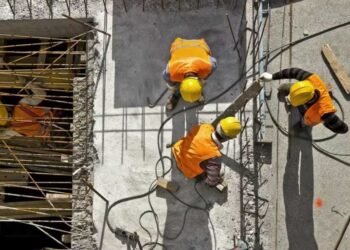Asbestos, a group of naturally occurring minerals, was once widely used in construction due to its heat resistance and durability. However, the health risks associated with asbestos exposure have led to strict regulations and the need for thorough asbestos surveys. Supernova Asbestos Surveys are crucial in identifying and managing asbestos-containing materials (ACMs) in buildings, ensuring safety and compliance. We will explore the importance of asbestos surveys, the types of surveys conducted, the process involved, and the benefits they provide.
Understanding Asbestos and Its Risks
What is Asbestos?
Asbestos is a naturally occurring fibrous mineral extensively used in construction materials for its fire-resistant and insulating properties. Commonly found in roofing, insulation, flooring, and cement products, asbestos was valued for its durability and affordability. However, when asbestos-containing materials are disturbed, they can release fine fibers into the air. Inhalation of these fibers can lead to serious health issues, including lung cancer, mesothelioma, and asbestosis. The hazardous nature of asbestos necessitates careful handling and management.
Health Risks of Asbestos Exposure
Exposure to asbestos fibers poses significant health risks. When inhaled, the fibers can become lodged in the lungs, causing inflammation and scarring. This can lead to respiratory diseases and cancers, often with long latency periods. Mesothelioma, a rare and aggressive cancer, is directly linked to asbestos exposure. The risks are especially high for construction, demolition, and shipbuilding workers. Given the severe health implications, it is essential to identify and manage asbestos in buildings to protect occupants and workers.
Regulatory Requirements
Due to the health hazards associated with asbestos, many countries have implemented strict regulations to control its use and manage existing asbestos in buildings. The Environmental Protection Agency (EPA) and the Occupational Safety and Health Administration (OSHA) enforce asbestos regulations in the United States. These regulations require property owners and employers to identify and manage ACMs to prevent exposure. Compliance with these regulations is crucial to ensure the safety of building occupants and avoid legal and financial repercussions.
Types of Asbestos Surveys
Management Surveys
Management surveys are designed to identify ACMs in buildings during normal occupancy and use. The goal is to locate and assess the condition of asbestos materials that could be disturbed or damaged during routine activities, maintenance, or minor repairs. This type of survey involves visual inspection and, if necessary, the collection of samples for laboratory analysis. The management survey findings help develop an asbestos management plan, which outlines procedures for safely managing ACMs and preventing exposure.
Refurbishment and Demolition Surveys
Refurbishment and demolition surveys are conducted before any major renovation or demolition work. These surveys are more intrusive than management surveys, targeting all ACMs that may be disturbed during the planned work. This involves inspecting hard-to-reach areas and potentially destructive sampling to ensure a comprehensive assessment. The information gathered is used to plan and implement safe work practices, including removing or encapsulating asbestos materials before the start of the project. This type of survey is critical to ensuring the safety of workers and compliance with regulations.
Reinspection Surveys
Reinspection surveys are conducted periodically to reassess the condition of previously identified ACMs. These surveys ensure that the asbestos management plan is effectively implemented and that any changes in the condition of ACMs are documented. Reinspection surveys are important for maintaining ongoing compliance with asbestos regulations and ensuring the continued safety of building occupants. The frequency of reinspections depends on factors such as the condition of the ACMs and the risk of disturbance.
The Asbestos Survey Process
Initial Assessment
The asbestos survey begins with an initial assessment to gather information about the building and its history. This includes reviewing building plans, previous asbestos surveys, and any records of asbestos abatement work. The initial assessment helps plan the survey and identify areas likely to contain ACMs. It also involves discussions with building owners or managers to understand the building’s use and any planned renovations or maintenance activities.
Visual Inspection and Sampling
The core of the asbestos survey process involves thoroughly inspecting the building to identify potential ACMs. Surveyors inspect accessible areas and, if necessary, use tools to access hard-to-reach spaces. Suspected ACMs are documented, and samples are collected for laboratory analysis. Sampling involves carefully removing small portions of the material and sealing them in containers to prevent fiber release. Accredited laboratories then analyze the samples to confirm the presence of asbestos and determine its type and concentration.
Laboratory Analysis
Laboratory analysis is a crucial step in the asbestos survey process. Accredited laboratories use polarized light microscopy (PLM) and transmission electron microscopy (TEM) to analyze samples and identify asbestos fibers. The laboratory analysis results provide detailed information about the presence and type of asbestos in the sampled materials. This information is essential for assessing the risk and developing appropriate management or abatement plans.
Reporting and Recommendations
Once the survey and analysis are complete, a detailed report is prepared. The report includes the visual inspection findings, laboratory analysis results, and recommendations for managing identified ACMs. The report typically includes a register of ACMs, indicating their location, condition, and risk assessment. Based on the findings, recommendations may include regular monitoring, encapsulation, or removal of ACMs. The report is critical for ensuring compliance with asbestos regulations and implementing safe management practices.
Benefits of Supernova Asbestos Surveys
Ensuring Safety
The primary benefit of conducting Supernova Asbestos Surveys is ensuring the safety of building occupants and workers. Identifying and managing ACMs significantly reduces the risk of asbestos exposure. This is particularly important in buildings where renovation or demolition work is planned, as disturbing ACMs can release hazardous fibers into the air. Ensuring safety through thorough asbestos surveys helps protect health and prevent asbestos-related diseases.
Regulatory Compliance
Compliance with asbestos regulations is a legal requirement for property owners and employers. Supernova Asbestos Surveys help ensure that buildings comply with local, state, and federal regulations regarding asbestos management. This includes identifying ACMs, developing management plans, and conducting regular reinspections. Regulatory compliance protects health and helps avoid legal and financial consequences, such as fines and lawsuits, associated with non-compliance.
Informed Decision-Making
Asbestos surveys provide property owners and managers with valuable information for making informed decisions about asbestos management. The detailed survey report and recommendations help in safely planning maintenance, renovations, and demolition work. By understanding the location and condition of ACMs, property owners can prioritize actions and allocate resources effectively. Informed decision-making ensures that asbestos management is conducted efficiently and effectively.
Conclusion
Supernova Asbestos Surveys are essential for identifying and managing asbestos-containing materials in buildings. Through comprehensive assessments, visual inspections, and laboratory analysis, these surveys ensure the safety of occupants and workers and help maintain regulatory compliance. Property owners can protect their health and avoid legal and financial repercussions by understanding the risks associated with asbestos and implementing effective management strategies. Investing in thorough asbestos surveys is crucial in ensuring a safe and compliant environment.












